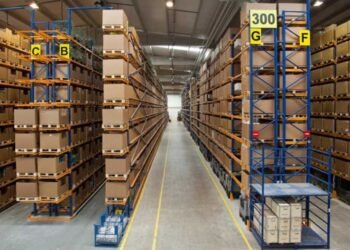Data storage is a critical aspect of IT infrastructure. And as technology continues to evolve, so do the options available for storing large volumes of data.
Therefore, understanding the benefits and drawbacks of various solutions is essential. It not only helps organizations make informed decisions. It is about their data storage strategies but also ensures efficient data organization.
This article delves into three primary options: tape, disk, and hybrid solutions. So read on as we offer insights to help you make the best decision for your long term data storage needs.
Tape Storage: The Time-Tested Solution
Tape storage has been one of the most reliable archival storage solutions mainstay for decades. It is especially especial for organizations that require efficient, cost-effective long-term data archival.
It has longevity. It has low cost per gigabyte. It has robustness. These characteristics make it an attractive option for many IT professionals.
Advantages of Tape Storage
One of the primary benefits of tape storage is its durability. Tapes are designed to last for decades, making them ideal for long-term archiving.
They are also highly resistant to environmental factors. They can withstand humidity, temperature fluctuations, and electromagnetic interference.
The cost-effectiveness of tape storage is another advantage. Tapes offer a lower cost per gigabyte compared to disk storage. This makes them an economical choice for organizations with vast amounts of data.
Tape storage systems also consume less power. They also contribute to reduced operational costs.
Scalability is a further benefit. Tape libraries can be easily expanded to accommodate growing data volumes. They provide a flexible solution for evolving storage needs.
Drawbacks of Tape Storage
While tape storage offers numerous advantages, it is not without its drawbacks. One of the main challenges is the slower data retrieval speed.
Accessing data on tape often requires sequential reading. This can be time-consuming, especially for large datasets.
Another consideration is the potential for media degradation over time. Though tapes are designed to last for decades, they may still degrade if not stored properly. Regular maintenance and periodic data migration are necessary to ensure data integrity.
Tape storage systems can also be complex to manage. They require specialized knowledge for maintenance and operation. This can present a challenge for IT teams without experience in tape storage technology.
Disk Storage: The High-Performance Option
Disk storage encompass both hard disk drives (HDDs) and solid-state drives (SSDs). They offer high-speed data access. This is widely used for both short-term and long-term storage needs.
Its performance and flexibility make it an ideal option for a wide range of applications. this includes the following:
- virtualization
- database management
- data analytics
Advantages of Disk Storage
The primary advantage of disk storage is its speed. HDDs and SSDs provide much faster data access and retrieval times compared. This makes them ideal for applications where quick access to data is crucial.
The performance benefit extends to both read and write operations. It enhances overall system efficiency.
Disk storage also offers greater ease of use and management. Modern disk storage systems come with user-friendly interfaces and advanced management tools,. They tasks simplify such as data backup, replication, and recovery.
Disks also support random access. They allow users to retrieve specific data points without the need to read through large volumes of data.
Reliability and redundancy are further benefits. RAID (Redundant Array of Independent Disks) configurations enhance data protection. It does this by distributing data across multiple disks. It ensures that data remains accessible even in the event of a disk failure.
For example, iSCSI (Internet Small Computer System Interface) and Fibre Channel (FC) technologies allow direct block-level access to disks over a network. When you understand and know what is iSCSI and FC you can use this to improve your business performance. This way, even if one disk fails, the data remains accessible on other disks.
Drawbacks of Disk Storage
Despite its advantages, disk storage as one of the best data preservation methods has some limitations. One of the primary concerns is cost.
Prices for HDDs and SSDs have decreased over time. However, they still tend to be more expensive than tape on a per-gigabyte basis.
Another consideration is the limited lifespan of disks. HDDs and SSDs have finite lifespans. HDDs are subject to mechanical wear. SSDs to a limited number of write cycles.
This can necessitate periodic data migration to new storage media. It also adds to maintenance costs and complexity.
Power consumption is another factor. Disk storage systems typically require more power than tape storage. They contribute to higher operational costs and environmental impact.
Hybrid Storage Solutions: The Best of Both Worlds
Hybrid storage solutions combine the strengths of tape and disk storage. They offer a balanced approach that leverages the benefits of both technologies.
Advantages of Hybrid Storage Solutions
One of the main advantages of hybrid storage solutions is cost-effectiveness. Organizations can store frequently accessed data on disk. They can migrate infrequently used data to tape for long-term archival.
This reduces the overall cost per gigabyte. At the same time, it still provides quick access to critical data.
Hybrid solutions also offer scalability and flexibility. They allow organizations to customize their storage strategies according to their specific needs. As data volumes grow, they can add more disk and tape storage as needed.
Companies can also take advantage of advanced management features. Many hybrid solutions come with features such as tiered storage and data deduplication. These help optimize storage usage and reduce costs.
Drawbacks of Hybrid Storage Solutions
One potential drawback of hybrid storage solutions is complexity. Managing multiple storage technologies can be challenging for IT teams. This may require specialized training or the help of external professionals.
There is also a risk of data fragmentation. If not carefully managed, data can become scattered across different storage media. This can make it more digital asset retention difficult to retrieve and manage.
Finally, hybrid solutions may not be suitable for small organizations or those with limited budgets. They require a certain level of investment in both tape and disk storage technologies.
Long Term Data Storage Is a Complex Process
Choosing the right long term data storage solution is essential for long term data preservation. Each option has its benefits and drawbacks, and organizations must carefully weigh their choices.
For some, tape storage may be the most cost-effective choice. For others, disk or hybrid solutions may offer more flexibility and performance. Ultimately, the best solution will depend on factors such as budget, data volume, and the specific needs of the organization.
Did you find this article helpful? If so, check out the rest of our site for more.












